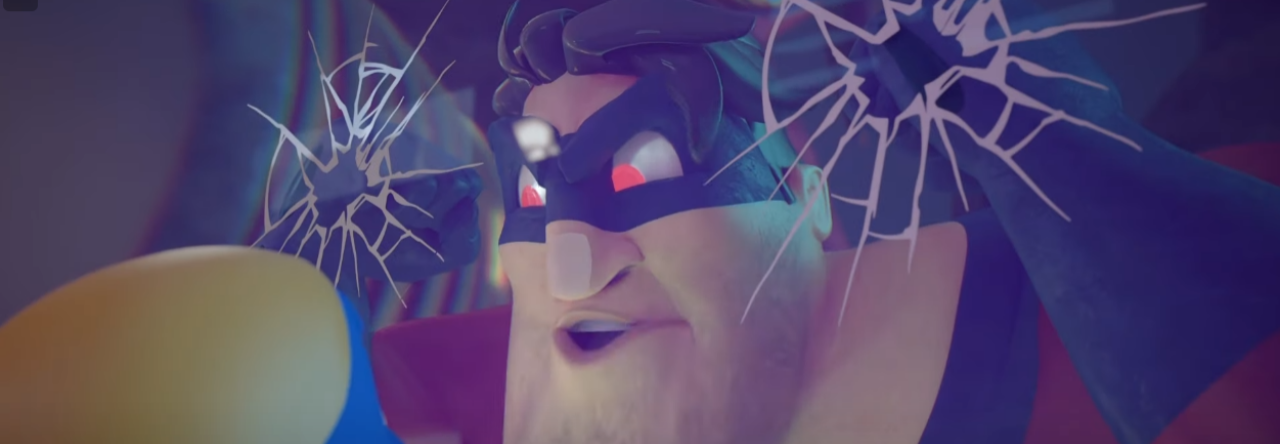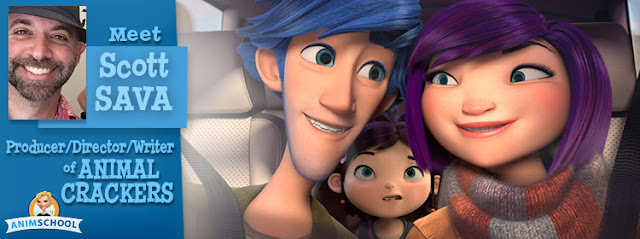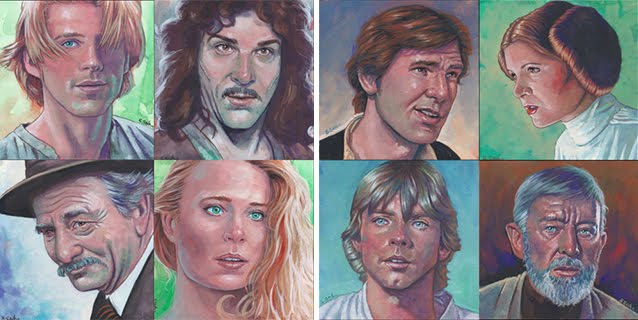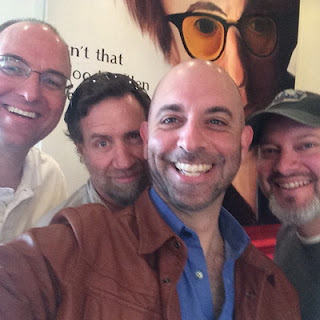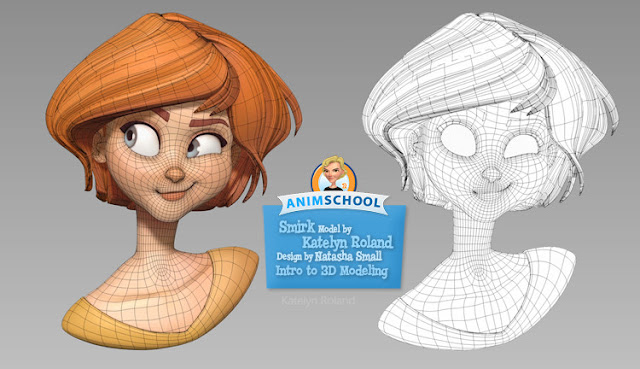Author: AnimSchool Page 20 of 26
In AnimSchool’s Environmental Modeling class, Dreamworks Environmental Modeler Juan Pablo Chen shows us how to resolve problems from concept art to 3D model.
For more useful tips like this one, please come and join us at www.animschool.com
In this clip from 3D animation program, Animschool’s instructor Ben Rush talks about do’s and don’ts of posing and how to avoid cliche acting choices.
For more useful tips like this one, please come and join us at www.animschool.com
Mark Tan was a star student we’ve interviewed in the past. Since graduating from AnimSchool, Mark has went on to work at Blue Sky Studios on the Peanuts movie. We got a chance to catch up with him to ask some brief experience about his journey so far!
Can you describe your experience at Blue Sky so far.
Animating here is both extremely challenging and rewarding. Peanuts had a 2 week program (Van Pelt University) that involved being immersed in the unique style. The training program was followed by a test which involved creating a shot with Charlie Brown. After the test was approved, we were moved into production. I tried to put as much effort and time as possible to every shot I was given, regardless of the length or character. Most the work I was assigned involved marketing promotional shots or background character animation in the movie. I did get a small Snoopy/Woodstock shot and Red Haired girl shot, which I am very grateful for. Currently we are crunching on Ice Age 5. I have never animated quadrupeds professionally, so getting thrown into a show with 10+ main characters who are all creatures is forcing me to adapt and learn. My skills have grown significantly since I first stepped foot in Blue Sky.
A typical day at Blue Sky can involve different things. Before starting you attend a kick off, which usually involves the directors showing you the layout or storyboard sequence and telling you what they want.
After getting kicked off, I plan either with reference or sketches and move into blocking my shots. When the shot is blocked out (enough to get the feeling and point across), I show my lead, address the notes, then show the supervisors, and address their notes as well. After it looks good to them, then you send off your shot to sweatbox, which is where the directors look at your shot again.
This process continues in a cycle until your shot is approved. Sometimes I could get a shot with a lot of characters and the task gets split to two or three animators. We communicate and try to keep each other up to date on our progress as we all move through the process.
 How has AnimSchool prepared you for this role?
How has AnimSchool prepared you for this role?The obvious answer would be that four of my mentors currently work here. Animschool gave me the closest thing to a first hand experience of what is expected of me as a professional animator. The quality and sense have to always be present for every shot you get. Also I understand a lot clearer what the directors/supervisors want when I get notes, so I finish each task promptly without confusion.
My main advice would be to look at the work of the pros and not your fellow classmates. The demo reels you see of people actually working in the field set the bar that you have to hit to be employed. Be critical of your work, but don’t discourage yourself. Learn to enjoy the process of being challenged so you are always improving.
Mark’s Demo Reel
We’d like you to meet the multi-talented, Scott Sava, who’s worked on everything from video games to television to feature film to comic books. He is now producing, directing, and writing his first full-length feature animated film, Animal Crackers.
 Hello Scott! Can we start by getting to know how you became interested in 3D?
Hello Scott! Can we start by getting to know how you became interested in 3D?
I started out in video games in the early 1990’s. At the time… it was Sega Genesis games (I worked for Sega of America) and everything was 16 bit (animating pixel by pixel).
As the years went on… 3D became the new thing… and I got to learn the medium as it grew in the industry. Eventually… I got to try my hand at films when I worked on a couple of the Casper the Friendly Ghost movies.
 Most people would not think of creating a comic strip (which is usually considered 2D) from 3D models. What was the deciding factor when you chose to try that?
Most people would not think of creating a comic strip (which is usually considered 2D) from 3D models. What was the deciding factor when you chose to try that?
I’d always wanted to be the artist on the Spider-Man comics. Since I was a kid. I went to art school. I studied illustration. But I never really had a knack for traditional pencils and inks. So despite showing my work at every comic convention for years… I never got the call to work on Spider-Man.
Finally… I met comic legend Marv Wolfman (Teen Titans, Blade, etc) who suggested I try using my “day job” skill of 3D animation and apply it to comics.
One thing led to another and… whatdyaknow? I got the gig.
After Spider-Man: Quality of Life (that was the series I did for Marvel to fulfill my childhood dream), I wanted to push the medium. So… Dreamland was born.
(The Dreamland Chronicles is available to read at http://www.thedreamlandchronicles.com/)
What do you think modelers, animators, or comic artists could learn from the unlikely combination of 3-D models in a 2-D format?
 But, the lack of movement makes the poses extra stiff looking. It’s very hard to get nice lines.
But, the lack of movement makes the poses extra stiff looking. It’s very hard to get nice lines.
And, the fact that your readers can literally stare at a single frame for HOURS to spot every mistake is never fun.
But. You can tell a story MUCH quicker (and cheaper) than you would be able to in animation. So there’s that.
How long did it take you to get from your lowest professional point to where you are now?
I started professionally my junior year in college (Academy of Art in San Francisco) at Sega of America. That was 1990.
I don’t want to do the math. It would make me cry all over my keyboard.
You took a very unique path to get to where you are today. Could you identify the major stepping stones for you, and how you got to each one?
I started off wanting to draw comics in High School.
I went to Art school and learned Illustration.
My junior year of art school, I got an internship to learn animation for Sega games.
A few years later, my wife and I moved to Los Angeles to work for a comic company (Malibu Comics) where I did both games and comic book covers (Star Trek and Mortal Kombat).
A few years later, I got a chance to work on my first feature film (Casper: A spirited beginning) which got me doing character animation for film. (I was the lead animator for the uncle Stretch.)
This turned into a lot of work doing tv animation for Saban (Power Rangers, Digimon, Nascar Racers, etc).
All the while, I wanted to do the Spider-Man comic I’d dreamed of since I was a kid.
Then, Marv Wolfman introduced me to the concept of merging the two mediums (animation and comics) and I got my dream job.
From there… I did several years of comics. Mostly for my, then newborn, twin boys.
Suddenly, Hollywood studios were optioning (when they pay you a small amount of money to take a property off the market while they develop a film) my books.
After many years of nothing ever getting made… I decided I’d do it myself.
And here I am. Making my first animated film… Animal Crackers.
How did you get the inspiration and courage, as well as the funds, to turn your Animal Crackers and Pet Robots comic books into full-length feature animated films?
Inspiration was my kids. My twin boys. They were maybe 7 or 8 at the time. I write all my books for them.
The funds was tough. REALLY tough.
The way we got the funds was to put together an animated short to show the investors what the movie would look like. That’s what sold it. Showing them.
What is the most exciting part of producing an animated film from your own home?
I think the fact that I’m doing it from my own home. I love not having to deal with traffic or… well… just people in general.
🙂
I love being able to paint while talking on the phone. Or skyping in my PJs.
Here’s another amazing Sneak Peek from Blue Dream Studios Spain for Zoe Huntington (played by Emily Blunt).I’ll try to keep adding new snippets here and there throughout the production. Hope you enjoy.Emily Blunt Official
Posted by The Animal_Crackers Movie on Monday, May 4, 2015
What advice do you have for other people who dream of doing something very similar?
Learn and adapt.
I’m an introverted artist. I do not have the personality or tools to do this. So I had to study Hollywood producers. I had to pick up the mannerisms. I had to become a person completely alien to me.
It’s uncomfortable and scary (Xanax helps).
But it was this… or lose my house. So I did it.
As an artist. You can see the end result clearly. But no one else can.
You have to show them. You can’t say “trust me… it’s gonna be great’.
Show them. That sells it.
People have no vision. They lack any imagination.
It’s pretty pathetic, really.
Too Close…
This week’s sneak peek is with Brock (Patrick Warburton) and Owen ( John Krasinski)Can’t tell you how fun it was working with Patrick. He steals every scene he’s in. It’s hilarious.In fact. I don’t think we wrote any of this gag. Totally ad-libbed. EnjoyScott
Posted by The Animal_Crackers Movie on Monday, January 25, 2016
As a creative person and also a business person, how do you define success? For example, is it in the satisfaction with a completed project, from income generated, or something else?
I find success daily. Finishing an email. A painting. Getting the kids to bed without a crying fit.
 Every day has little successes.
Every day has little successes.
These build up to bigger ones.
Finishing the movie is the culmination of many years of little successes.
 I’ve been working on painting the movie poster for 7 weeks now. Each day… I have a little success. Finishing a chimpanzee. Or just a hand or paw. But it’s a goal I set and accomplish for that day.
I’ve been working on painting the movie poster for 7 weeks now. Each day… I have a little success. Finishing a chimpanzee. Or just a hand or paw. But it’s a goal I set and accomplish for that day.
One day soon. It’ll be done.
Same for the movie… or pretty much anything we do.
The BIG stuff is always too big to just look at the end result and work towards it alone. You have to chop it up into manageable successes. Bite size.
As for the money? Nah. Artists don’t do it for the money.
We’re just happy to be able to pay the mortgage and feed the kids.
This doesn’t mean I’m not going to get paid well. Eventually. But it’s never the motivator.
As artists… we have to both be willing to sacrifice for our art… while also fighting for our right to be paid for it.
Everyone tries to take advantage of you. It’s just how the industry is.
You have done a lot of work (and a lot of different kinds of work!) in the 3D world. Over the years, did you ever make a major mistake that you learned an important lesson from?
Daily. It’s how you learn.
I don’t recall any one particular BIG mistake. Like my successes… I like to do mistakes daily. In bite size.
Hopefully they don’t add up to one BIG mistake one day. But art is trial and error. It’s exploring the paths less taken.
That’s the fun of it.
Do you have a specific philosophy or approach that you take to creativity and learning?
As above… I have found trial and error, little bites of success, and learn and adapt to be good ones I’ve followed.
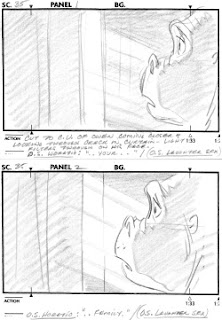
My art and my profession have changed so many times throughout my career. From illustrator to video game animator to game designer to character animator for feature films to comic book artist to graphic novel author to movie producer/director/writer.
I’ve gone from exclusively using prismacolors to watercolors and now gouache to paint.
I once had a head full of hair. Now? Totally bald.
Life is change.
Don’t get hung up on one style. One profession.
Explore. Learn. Become more than the person you were yesterday.
Always try to improve yourself… while still being happy with the person you are.
I think that’s the toughest thing. Striving to be better… while still being happy of who you are and who you were.
Knowing that you did your best with what you had in front of you that day… and being content in that is good. Knowing that you can do better tomorrow is great too.
Hope that helps.
Scott
For more information about Animal Crackers and the team that’s behind it,
please visit http://bluedreamstudiosspain.com/
In this clip from Game animation program, Animschool’s instructor John Paul Rhinemiller talks about off sets and bringing personality in a game character even during loops.
For more useful tips like this one, please come and join us at www.animschool.com
Hi Katelyn! Can you start by telling us a little bit about yourself and your previous modeling experience?
Do you remember the moment you realized that this was what you wanted to do?
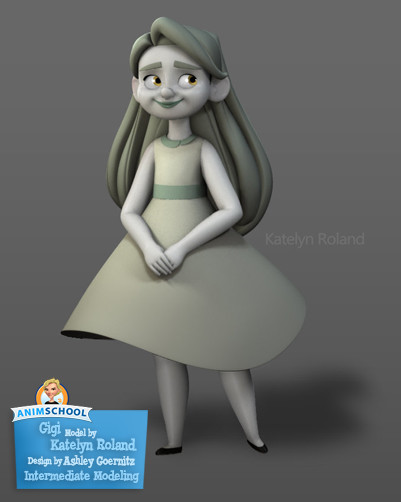 Was there any time while learning 3D that you felt overwhelmed or wanted to give up? How did you overcome it?
Was there any time while learning 3D that you felt overwhelmed or wanted to give up? How did you overcome it?
 Was there any time while learning 3D that you felt overwhelmed or wanted to give up? How did you overcome it?
Was there any time while learning 3D that you felt overwhelmed or wanted to give up? How did you overcome it?Is there a particular lesson you learned during your time at Animschool or advice that you’d like to share with people just starting out?
Apart from actual modeling techniques, I think the thing that stuck with me the most is that you really have to put the time in! As with all art forms, no one gets better overnight. And you can’t always finish your homework assignments with just one all nighter either!
 We can see from your beautiful 3D models that you’ve grown a lot since starting Animschool. How do you think you’ve improved as a modeler?
We can see from your beautiful 3D models that you’ve grown a lot since starting Animschool. How do you think you’ve improved as a modeler?
I think I’ve improved in a lot of ways. I learned so much during my time at AnimSchool. First of all, as I mentioned earlier, I actually learned to use Zbrush for my models now! That alone has helped improve my models immensely. Also thanks to the modeling classes at AnimSchool, I learned a lot about appeal, which is arguably the most important thing for characters. I still have a lot to improve on, but AnimSchool helped me get up and going in the right direction!
Are there any particular artists or modelers in the industry who inspire you?
What have you been up to since you graduated? Any new projects that you’ve been working on?
Where do you hope to end up from here? What’s the ultimate goal?
Modeling Reel Summer 2015 from Katelyn Roland on Vimeo.
 |
| Jacob’s family |
Characters have such a strong pull on me. I moved onto modeling and started practicing Zbrush for a little bit.
3: Why did you decide to join AnimSchool’s modeling program?
4: Tell us about your workflow and how did instructors help you shape it.
5: Tell us about you models.
The models I choose to do are based off of designs that make me want to model them. Models take so many hours and so much energy that you really need to pick something that inspires you. All of the designs I have chosen inspire me. I have always been a big fan of Disney’s art. So, when deciding on a design I try to find something that could fit in Disney’s world. Then while I am modeling I constantly compare my work to Disney’s art.
6: Modeling is considered to be a very intricate job where you have to focus on all the details and capture all the nuances of a character design. Has knowing animation helped you in this process?
7: Are you currently doing a job in animation industry?
8: Modeling is also a very time consuming field for starters. How did you manage balancing your daily job and this program while also taking care of your family?
After a while I decided that at least one day a week I wouldn’t do modeling. I think I mostly stuck with that and that was the balance. To progress in anything requires sacrifice and learning modeling requires time. Without time you end up missing some of the polish and finalizing things on models. So, you have to be smart about your time and really rely on hot keys and your gut. One of the best things I can recommend is that people join their fellow students in a Google Hangout or some way of sharing the screen and motivate each other. Just having someone modeling on the other end of the computer helps you to do your work, even when you really do not want to.
9: What is the best advice you received in your training?
The best advice is kind of funny. I heard multiple teachers say it. It is ugly until it is not, keep pushing it forward.
Basically, everything is ugly at first and you have to work to bring the right forms and volumes through model. It is a really simple thought, but it helps to know that your instructors aren’t satisfied with their work at the beginning too.
Great job AnimSchool student Jacob VanValkenburg! Personal project between terms.
Learn with us at:… https://t.co/5lg48FmPdy
— AnimSchool (@AnimSchoolTweet) January 18, 2016
Learn with us at:… https://t.co/5lg48FmPdy
— AnimSchool (@AnimSchoolTweet) January 18, 2016
10: What is your advice for people who have a passion like you for arts but are doing job in other fields?
For more of Jacob’s work, please visit https://www.artstation.com/artist/jacob_van
For more useful tips like this one, please come and join us at www.animschool.com
In this lecture for Body Acting class of AnimSchool’s 3D animation program, Pixar animator Ben Rush touches the following important points regarding Timing::

